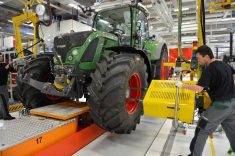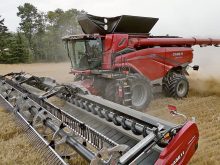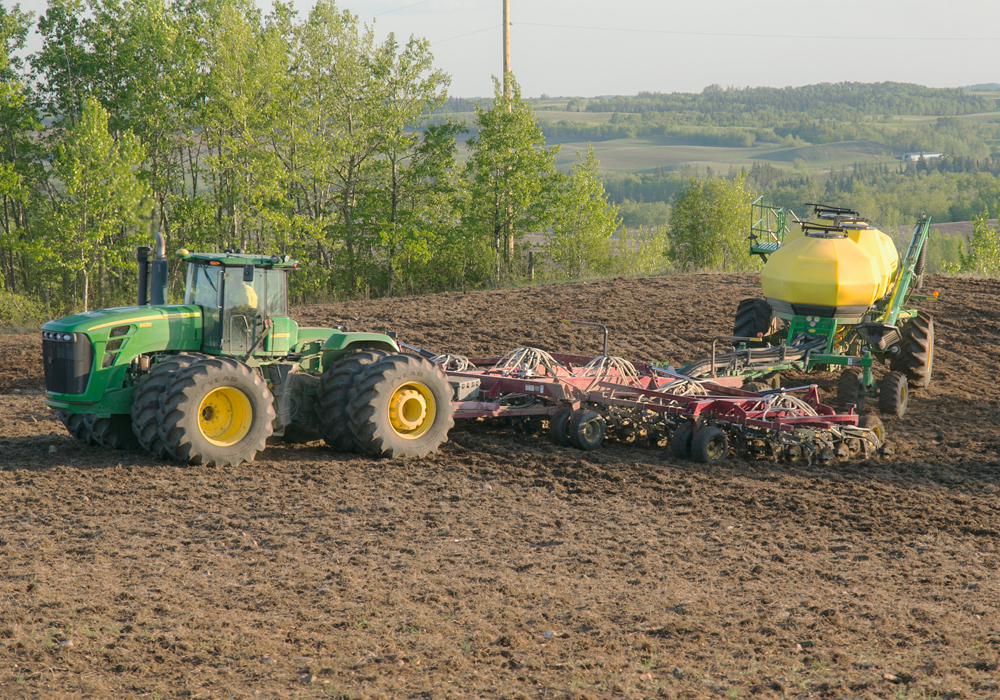ROSALIND, Alta. – A group of central Alberta farmers will soon operate the province’s first grain dependent short-line railway if they can sell enough shares to buy the line from Canadian National Railway.
The Battle River Railway plans to sell shares by mid-September and take over the 83 kilometre branch line by Jan. 15. CN has agreed to sell the line and 700 acres of land beside the railway for $4.85 million.
For six years, 180 farmers on the line between Alliance and Camrose have loaded producer cars through the Battle River Producer Car Group.
Read Also

Stacking Canada up on gene editing livestock
Canada may want to gauge how Argentina and other countries have approached gene editing in livestock and what that has meant for local innovation.
Reg Enright, vice-president of the newly renamed Battle River Railway, said the line runs through some of the best grain growing land on the Prairies and believes enough grain is grown in the area to make the short line viable.
In previous years, local farmers loaded about 525 cars a year on the line at stops in Kelsey, Rosalind, Heisler, Forestburg, Galahad and Alliance. Last year, that was increased to 650 cars.
According to Canadian Grain Commission records, about 2,000 cars were loaded on the line in the 1995-96 shipping season. Enright doesn’t see why they can’t load at least 1,000 cars a year on the new short line instead of making farmers haul grain several kilometres away by truck to large high-throughput elevators.
Since 2003, when the producer car group began, farmers have moved several hopper bins to the sidings to make it easier to load grain into cars.
Farmers have 11 bins in Rosalind, five each in Heisler, Galahad and Alliance and three in Forestburg. The Oberg family in Forestburg bought the old Agricore United grain elevator, which holds the equivalent of 13 cars of grain.
While some farmers balk at the idea of loading producer cars with only short notice of when cars will arrive at the siding, Enright said hauling grain to the elevators isn’t always about farmers’ convenience.
“That’s not a panacea either. We think it’s going to be more user friendly than hauling to the elevator.”
The line was put up for tender last year when CN sent notification the line was to be closed. The group beat out American rail salvage company A and K RailRoad Materials for the tracks.
Battle River president Ken Eshpeter said one of the keys to the purchase is the high quality of the railway line. CN upgraded the line in 1988 to 132 pound strength steel, the same steel as on CN’s main line, so it should last for a long time with minimum maintenance in the first few years.
In the past, only Canadian Wheat Board grain has been shipped on the CN line to Prince Rupert, B.C., but organizers hope to expand to non-board canola and peas and possibly gravel or fertilizer.
Five classes of shares ranging from $1,000 to $25,000 will be offered.
Eshpeter said his group hopes farmers buy a $5,000 delivery share for each producer car they load. The eight producer cars he traditionally loads would translate to a $40,000 investment.
The railway will operate as a new generation co-op, which Eshpeter said is similar to how farmers worked together years ago.
“That’s what built the Prairies – farmers working together. It’s probably the best model. We’re trying to reinvigorate the concept of social and economic activity in rural areas.”
Saskatchewan farmers have created nine short-line railways with 1,600 km of track. In many areas of Alberta, it’s too late to save many of the lines that could have been turned into farmer-owned short lines because tracks have been removed.
“It’s unbelievable what we’ve allowed to happen,” said Enright.
“Let’s stand up for ourselves and do something for ourselves rather than relying on someone else whose interests aren’t the same.”
John Oberg of Forestburg said farmers owning the line should help increase the value of farms along it because of the increased service. The railway plans to buy its own locomotive to haul the cars to Camrose each week.
In the past, special trains serviced the line, but now the cars for the line will come in on the daily trains between Edmonton and Calgary, and be spotted in Camrose.
“It will give producers much better service than they had in the past,” Oberg said.
“It’s a very positive move for local development. It goes back to the original idea of a rail line. It was supposed to foster local economic and social development.”














